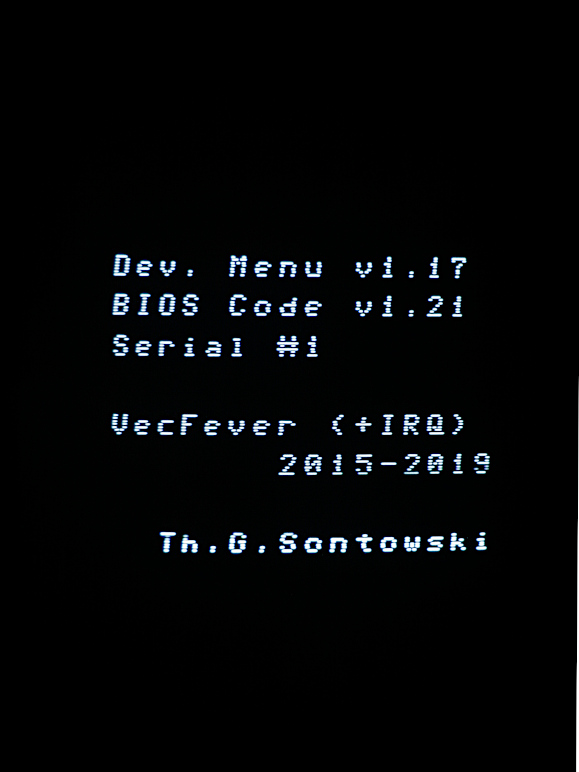The Vectrex draws everything manually by the CPU and one frame to the next ideally the drawing timing does not alter all that much to keep the output as stable as possible. The main concern here is not only refresh rate which usually results in wobbling output – changing the drawing order and/or timing also can change the stability !
One interesting result of this is that hardware interrupts are pretty much unusable on the Vectrex since they usually would interrupt a cycle-wise tightly-knit drawing routine. Very much like the Atari VCS if you know about that hardware (and no interrupts there, either).
This background is the explanation/excuse why the first VFs did not use the IRQ line, I honestly thought it was irrelevant. Silly me, give a retro programmer something, anything, and he will find a use: Malban pointed out to me that in ‘Vector Patrol’ the IRQ line was used just as a TTL line, one thing lead to another and we came up with the idea of using this ‘IRQ line’ as another GPIO just like the VIA6 one, esp. as another adr. line for banks – increasing the amount of easily addressed 6809 mem. space from two banks to four. This allows a very simple hardware to address 4x32kb via software and with just a teensy bit more (than just an eprom) you could even get 4x48kb – and Vectorblade does !
The VF Mark II does include support for this ‘IRQ-as-TTL-magic’ but for the previous pcbs at least a few GPIOs were made available for future tinkering which made it possible to develop a simple modification to enable it on these, too.
So if you are also eagerly awaiting Malbans upcoming Vectorblade here is the info. you need to be able to play games like it on a VF Mark I: all that has to be done is to connect one specific free GPIO to the cart. port:

If you know how to handle a soldering iron this is pretty easy to do. I have chosen a very thin wire here since the cart. shell plastic might be on top of it on the connector-side and wired it through the two empty holes next to the LEDs. Then hot-glued it at the end points for stability. That way it can handle rougher treatment w/o breaking off at the solder points.
here is a photo with LEDs attached (the LED wires are soldered on usually):

Starting with firmware v1.18 onwards the menu detects this connection and if present enables the ‘irq/ttl’ cart. extensions. If successfully detected it will be displayed under options/version as ‘(+IRQ)’. Otherwise trying to start an ‘IRQ’ cart. results in an error message:
Here is a small 4x48kb ‘IRQ’ test cartridge: it loads/stores a permanent counter: this counter is manually incremented by pressing 2: and it exits to the menu via 1:. Thereby testing the underlying mem. space and load/store/exit capability. But equally useful to test whether the IRQ mod works at all, of course, so here it is:

